DO-IT News December 1995

Volume 3, Number 4
Below are the articles of the DO-IT News December 1995 newsletter. These articles can also be seen all on one page at the Full Newsletter option.
Director's Digressions
For a college freshman, talking to a professor can be intimidating at first, but developing a positive student-professor relationship is especially important to the success of a student with a disability. In DO-IT activities students are encouraged to develop skills in communicating with college faculty.
First, we explain the nature of a faculty position. We compare the job of a college professor with that of a high school teacher. For example, for a high school teacher, instruction may comprise most of the time in their work schedule. However, many college faculty members spend a great deal of time conducting research and handling other non-teaching duties.
High school teachers usually spend longer periods of time with a student than college professors. For example, high school students might see their mathematics teacher every school day for a whole year; college students may see a specific mathematics professor in class only three times per week for ten weeks. This fact, coupled with some large college class sizes means that professors may not be able to get to know all of their students personally. Often, faculty become best acquainted with students who make a point of contacting them before or after class; therefore students have a strong influence on their relationships with professors.
Parents, counselors, and special education teachers often make sure that appropriate disability-related accommodations are made for a student before college. In college, it becomes the student's responsibility to request accommodations.
Together, these factors mean that college students with disabilities must take the initiative in order to assure that they will receive accommodations. The disabled student services office on campus is a good place to start, but developing a positive relationship with each faculty member is also important.
Potential college students should learn good communication techniques and then practice them! In some of our DO-IT activities students participate in role-playing exercises. One student plays a faculty member and one plays him or herself (not as easy as it sounds!). The scenario is that the student is meeting with the professor before taking the professor's class. Here are the instructions we give the students:
Introduce yourself and then:
1. explain that you have a disability and that you will need some accommodations in class. You should request a letter from the disabled student services office that will explain what accommodations are needed.
2. describe your disability in terms of functions that are relevant to the class. (Don't go into your whole life history here; focus on how your disability will affect you in the class.)
3. describe what types of academic accommodations have worked for you in the past and how they were helpful.
4. be specific about your requests. Don't assume that the professor knows about your type of disability or that they have ever had a student with a disability in their class.
All of this should be done in about five minutes. Here are a few short examples:
- I cannot use my hands because of quadriplegia. I use a portable computer, Morse code input with a sip and puff switch and Internet resources to help me complete my work independently. I would like to be able to use my portable computer to take notes in class and to complete exams. I would like to be able to use adapted lab equipment when possible and I may need a lab partner if there are some tasks I cannot perform."
- I have a learning disability which makes it difficult for me to read. I am a very slow reader. I limit the number of classes I register for and allow extra time to complete reading assignments. I would like to get the reading assignments as early as possible and I will also need extra time to complete written exams."
- I have been blind since birth. I cannot see the blackboard or other visuals shown in class, and would like you to explain what you are writing on the board as you are writing it. I cannot read printed text and I use special adaptive technology to access a computer. I have a computer with voice output and access to the Internet. I also have Braille translation software and an embosser for creating hard copy in Braille so that I can read and edit it. I have a standard printer for producing papers to turn in to you. I would prefer that you give me handouts, tests and other materials you create on disk or via electronic mail so that I can convert them to Braille or use voice output. Articles and texts need to be produced in Braille or on audio tape. These processes take time, so the earlier I can have the materials, the easier it will be for me to keep up."
Many students report positive responses from faculty when they take similar proactive approaches to seeking accommodations. Remember that most faculty are willing to provide accommodations if you are clear on what you need and how it can be provided. Also, you are the expert on your disability and your unique needs. Faculty need your help in determining appropriate accommodations. It's reassuring to know, however, that the disabled student services office is there to help you determine what an appropriate accommodation is and help you and the professor set up the accommodations. The DSS office can also intercede when a professor is resistant to providing an accommodation.
Attention Potential DO-IT Scholars!
We are actively recruiting high school sophomores with disabilities to participate in the DO-IT Scholars program. Candidates must be interested in science, engineering or mathematics and in going to college, and must live in the United States. DO-IT Scholars attend summer study sessions at the University of Washington, are loaned computer systems that they keep in their homes, and connect to the Internet. Most costs are covered by a grant from the National Science Foundation. Please encourage young people to apply. You can get details about the DO-IT Scholars program at our home page at www.washington.edu/doit Applications can be obtained from the DO-IT office. They are accepted on an on-going basis. Potential applicants are encouraged to submit their forms by the week of January 22 in order to be reviewed by the next meeting of the Advisory Board.
Mentor Profile
My name is George Kerscher (just George please), a new Mentor with the DO- IT program. I'll introduce myself and give you a little background on the work I've done.
First, I'll let you know that I am blind. I have retinitis pigmentosa (RP) and am in the later stages of that eye disease. I can still see a little bit, but not much. I use a computer with a speech synthesizer all the time.
I am 45-years-old and started off my professional career as a teacher and coach. I taught at a lot of different grade levels, but most of the time I was in the high school and junior high levels. In 1980 I started to get into computers Ñ that was also the year I turned in my drivers license because of the RP. In 1985, I could no longer read standard print even with magnification and decided to quit my job and go back to school for a masters in computer science.
At that time I discovered the problems of attending college with a disability -- ten years have made a lot of difference and things are much better now! One of my biggest problems was reading books. I could never seem to get the books I needed from Recordings for the Blind and I couldn't find very many qualified readers. At that time the cost of a scanner and OCR equipment was over $20,000 and very few people can afford that kind of cost. So, I had a big problem.
Well, I figured that publishers are using computers to publish these books, so why not just get the files and read the books on the computer? I wrote to many publishers asking for their files and only one company responded by sending me three disks each containing the books, but what a surprise! The files were a complete mess and they were not usable. Over Christmas break, I looked very closely at the files and began to decode that publisher's files. By the end of break, I had the first electronic copies of Lotus 1-2-3, Dbase III, and WordPerfect. This was in the beginning of 1988 and by that Summer I had started a project at the University of Montana called Computerized Books for the Blind & Print Disabled" (CBFB). This was very successful as far as non-profit companies go. In 1991 CBFB joined forces with Recording For the Blind to form their E-Text division!
Currently I work for Recording For the Blind & Dyslexic (RFB&D) we added the "& Dyslexic" to our name in July of this year. My position is research fellow and I help RFB&D stay on top of technology for persons with print disabilities. I work with a lot with publishing systems and also serve on the International Committee For Accessible Document Design (ICADD).
I enjoy interacting with the Scholars in the DO-IT program. I try to stay on the leading edge of computer technology for the blind sometimes called the bleeding edge! I believe that computer technology is the great equalizer for persons with disabilities and I encourage students with disabilities to get an adapted computer and really learn how to use it!
On a personal note, I feel that my disability does not reduce my worth as a person or a member of society -- in other words, I'm proud of who I am and what I can do!
DO-IT continually recruits Mentors. If you are interested, or know someone who might be, email doit@u.washington.edu and request an application. To write to the Mentor group, send a message to mentors@u.washington.edu
Technology Tips
The overwhelming popularity of the World Wide Web, (also called W3, WWW, or just plain Web") has made it a topic filling recent newspapers and airwaves. As more people join the electronic community of the Internet they are discovering the wealth of information made available on Web pages around the world. In the old days" of Internet access, a significant amount of knowledge about gopher sites, USENET news readers, and e-mail discussion lists was key to accessing information. With movement of information to Web sites, the way in which we access information is greatly simplified in that we need only use a single program or interface rather than three or more.
So What the Heck is the World Wide Web?
The World Wide Web is a resource on the Internet that provides access to text, data, sound, video, images or any combination of these data forms (and more). Combining these features of multimedia allows for attractive presentation of material that is available with only a keystroke or click of the mouse. Central to the idea of Web-based information is the concept of hypertext. Most people who have used a computer are familiar with the concept of hypertext even if they aren't familiar with the term. Any time a person is reading information online and part of the text can be selected resulting in additional information, this is hypertext. Organizing information so that text items can lead from one to the next increases its accessibility and usability. Good examples of information that use the capabilities of the Web are a technical document containing links to maps when discussing weather patterns, and sound and video files linked to a document discussing historic space flights. The variety of information available on the Web is truly staggering both in the quantity as well as the quality of presentation.
YAAWN (Yet Another Acronym We kNow): HTML
Hypertext Markup Language, also called HTML, is the format of most information found on the Web. HTML embeds the formatting for the text within a document, allowing information to look as if it was created using a modern word processor. Simple HTML allows for codes that create boldface text, italics, different font sizes, and other formatting. Basic knowledge of HTML is key to creating information to be published on the Web. Just as software such as word processors are updated and revised, the codes that HTML employs to format and present information go through upgrades.
Viewers
There are a number of viewers, also called browsers, that are used to access and read information on the World Wide Web. Common viewers include: Netscape Navigator, Mosaic, Lynx, and WebExplorer. There are other web browsers as well, some of which are proprietary to specific online service providers. For example, America Online, CompuServe and Prodigy all provide Web browsers as part of their Internet access services. When creating new web pages, it's important for web page developers to keep in mind that everyone might not use the same browser to access their information. With this in mind, it's a good idea to view your web pages using two or three of the most popular web viewers, including a browser that is not graphical in nature, such as Lynx.
How to Choose a College
The process of choosing a college can be confusing. There are many questions a student needs to ask, and if you are a student with disability you may have unique concerns. Starting with a self inventory will put you on the right track to selecting the college that not only fits your interests and finances, but also specific needs as they relate to your disability. Below are basic questions to answer in your search for the perfect fit".
- How prepared am I academically? Have I taken the same courses in high school as my non-disabled peers who are preparing for college? How good is my vocabulary and what is my reading level? Do I know how to write a good term paper? Might I need to take some remedial coursework?
- What do I want to study? What courses did I enjoy in high school? What types of long-term career goals do I have? What are the entrance requirements for these fields of study?
- Where do I want to study? In what type of environment do I learn best? Do I prefer smaller classes with more one-on-one interaction with professors, or larger classes with less direct contact?
- How much tuition can my family afford? What types of scholarships and loans are available?
- What types of accommodations will I need? Some types of accommodations are legally mandated and others are not. If you need tutoring or other types of accommodations you should check the availability of these resources at each school. Be sure to contact the offices on campus that provide services to students with disabilities.
- What additional campus resources are available? Some campuses have writing centers, tutoring centers, access to email or other on-line resources, and other academic-related resources. If the school offers these resources to their students they are required to make them accessible to students with disabilities.
- What services are offered through the campus office of services for students with disabilities? Each campus has an office or a person who is responsible for providing accommodations to students with disabilities. Contact this office and talk to them about your needs. They may be able to provide some suggestions that you haven't thought of.
Completing a self-inventory is an important step in narrowing down your choices. Your local high school or community college should have resources to help you search for schools which fit your preferences for the location, size and academic programs of interest. Try to narrow your list down to about half a dozen or so institutions and proceed from there!
Follow up and follow through. This is a time to be proactive and vocal about your needs as a student. Find out who can help you and then talk to that person. Ask for a referral to anyone else who might be able to help you. Be sure to get all of your questions answered! The school you choose is a very important decision that will have a tremendous impact on your academic future.
Reference: How to Choose a College: Guide for the Student with a Disability. To receive a copy of this booklet, contact HEATH Resource Center, One Dupont Circle, Suite 800, Washington, D.C. 20036.
DO-IT Helps to Close the Gap
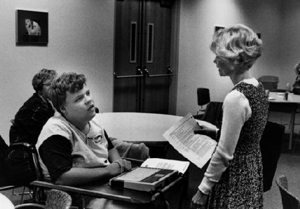
Dan Comden, Anthony (Scholar from North Dakota), and I recently attended a Closing the Gap conference on computer technology for people with disabilities in Minneapolis, MN. I will share a few thoughts about the conference and then Anthony will fill you in on the two presentations delivered by DO-IT (see related articles). For those of you who haven't met Anthony, he has cerebral palsy, is a wheelchair-user, and uses a computer-based voice system (Liberator) to speak. He composed a speech ahead of time and then answered questions. The wonders of technology! Being able to speak with your own voice is no longer a prerequisite for being a public speaker.
The conference was inspirational and overwhelming. I have been going to this conference for about ten years. This year is the thirteenth for this international event. Things have changed dramatically over the last few years. It used to be a room of tables of small vendors, often with products produced from garages and spare rooms in homes. Often a product was developed in response to the need of a child, other relative or friend with a disability. As a visitor, I was usually looking for any solution to specific access problems: I didn't expect bells and whistles.
...and, now...the huge exhibitors' floor is full of professional booths with almost any product you can imagine...there were seven different companies with screen readers for Windows! Products ranged from brightly colored wheelchairs that could be operated from a standing (with support) or seated position for very young children; educational software for children with cognitive impairments (in several languages!); a voice output bar code reader that could be used by blind people who want to know the contents of products marked with bar code...or who want to create their own bar code labels for files, disks, etc., and be able to read them later; a portable closed circuit TV for enlarging text of books; environmental control units for individuals with no use of their hands; music systems for children with disabilities; you name it, it was there.
A large number of people with disabilities who are exhibitors and attendees at the Closing the Gap conference. On Saturday it is open to the public, so lots of children show up with their parents.
This is a conference worth attending if you want to see a lot of adaptive technology all at once. It takes place in Minneapolis each October. Closing the Gap also produces a newsletter and resource directory that includes companies and organizations that sell and support adaptive computer technology for people with disabilities. Contact Closing the Gap, P.O. Box 68, Henderson, MN 56044 (612) 248-3294; FAX (612) 248-3810.
Closing the Gap with Mentoring
DO-IT played a roll at Closing the Gap again. This year, we did two talks during the 3-day event. Sheryl and I spoke on computer mentoring. We also showed the new DO-IT adaptive technology video called Working Together: People with Disabilities and Computer Technology (contact the DO-IT office or WWW home page for ordering information). I shared some of my ideas on technology helping handicapped people plus on my mentoring people outside of the program. Anthony did a great job. The audience showed a lot of interest in how the Internet can empower individuals with disabilities.
Dan Comden, our DO-IT computer specialist, gave a talk about some of technical aspects of the program (you know, all of that stuff that he makes look so easy? It isn't!). His subject was on setting up computer systems for Scholars at home, like what devices are needed and Internet connections from other locations.
Closing the Gap Speech
I am Anthony from Gand Forks, ND. I am a Phase II Scholar with the DO-IT program. We were given the opportunity to choose an area that we were interested in learning more about after being introduced to a variety of areas during our first year of DO-IT. The area I chose was Technical Communication, which is a growing market as computers are networked more. It allows you flexibility for doing your job. This is very important for the handicapped worker. To me, it is very exciting to get more disabled people working with the aid of computer technology.
Over the last year of being with DO-IT I have become more aware of the disabled population being helped by technology. Being in DO-IT I have also learned what a mentor is and how to be one myself for disabled people and their families. Using Internet, I have connected with people all over the world acting as a mentor. I have shared ideas and answered questions as well as getting information for myself and passing it on to others. I have been able to connect with professionals such as Larry Scadden of the National Science Foundation. Through my conversations with Larry about career goals, he helped me connect with Barry Romich of the Prentke Romich Company, the maker of my speaking device. I will be working at the PRC booth today and tomorrow helping show the powers of the Liberator. Feel free to ask questions after this presentation.
Cheers (and Fears!) of College Life
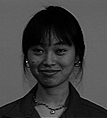
I'd have to say that my greatest fear was how I could get around UW's campus since it's such a big school. Through DO-IT and by asking around, I found out about UW's DSS (Disabled Student Services) and who to talk to about certain matters I had in mind. I started communicating with Ms. Cook from DSS, and I have to say she did some wonderful things for me. She helped me with my room relocation, gave me information about Dial-a-Ride van service, and lockers, and she even provided me some support when I was feeling frustrated and worried about how things might not work out. It is true that it might take more effort for someone with a disability to start college (or anything else new in life), but we have to realize that there are people out there we can seek help from and it's up to us to make the first move.
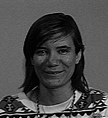
Well, I have to admit college is a lot different than I thought it would be. It's weird living with a bunch of people I've never met before. Having a roommate I never met took a little getting use to. It's not stressful right now. I am only taking 13 credits. I am taking a writing class, a general psychology class, a interpersonal communications class and a microcomputers applications class.
My roommate is okay. We don't see much of each other. My interpersonal teacher is very nice and funny. That is my favorite class then psychology and computers are tied and then writing. I love writing, but not for a grade. I have met a lady who lives across the hall from me. She is very nice.
One bad thing about college is that professors don't always communicate with each other. You can wind up getting three tests in one day. Hopefully one is easy.
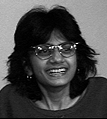
This is my first quarter at Highline Community College. Before going to college I was very excited and nervous but when I started attending, it is fun. I get to meet different people every day and I have made tons of friends. College campus is no problem to get around in a wheelchair. It sometimes gets hard to keep up with the classes because teachers cover the material so fast. So far I like being in college.
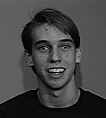
I'm here at Oregon State University (OSU). My move from Ashland, OR, was actually amazing. Everything worked out. I was expecting the worst and ended up with the very best. This was a wonderful and welcome surprise. I actually managed to fit everything in the car, and got it all here in one piece. It's very nice here, and I'm not even getting lost anymore. I've found that the trips to the bookstore are plentiful, and boy some of those books can be heavy. Beware of Biology! This thing is huge! I've started working for the Residence Halls as the AT (Adaptive Technologies) Advisor. Meaning that anyone who has any AT with their computer I set up, work on, etc. I'm also helping out other students... there's a lot of computers around here. We have direct ethernet connections in the dorm rooms which is really nice. It's just like it was up at the UW. Sorry to those of you using modem access, I'm not meaning to rub it in, but it's SO FAST!!! Have a great school year!
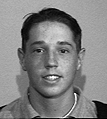
Well, my first year out here I met a guy who was a legend. Me and him hit it off right away. I don't want to say we made a clique or anything, but we did do everything together. Have you ever seen the movie "Of Mice and Men?" Well, that was how close we were, and if one of us was Lenny, it was me. This guy was the brains of the operation. The next year he decided to try to graduate a year early, so he dropped the program. Then I met more special people...I'd talk about them but the stories between us are just to fun to talk about.
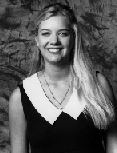
I live in the dorms in a college about thirty miles or so away from my hometown. I feel that my disability, chronic lyme disease, is a part of myself, not a separate entity. I have had it most of my life and the struggles through these years have made me who I am, essentially. I don't feel that having a disability is necessarily a bad thing. It can teach you important lessons about life that you may never otherwise understand. The main one is to be thankful for life. I had to learn at an early age to accept that life can end. So you make the best of what you have.
A Friend Indeed
I thought I'd share a little encouragement with everyone, especially those of you who, like me, are having difficulty making friends in school. I was in the first group of DO-IT Scholars and am now a sophomore at the University of Washington. I am blind.
In my presentation at the 1995 DO-IT Scholars summer study session at the UW I talked about how finding good friends in college has built my confidence in my ability to interact with other people. Anyway, that confidence which was developed last year is now showing its benefits. I moved into a new dorm this quarter and out of a floor of 96 people I knew three. I should have been terrified; I would have been a year ago. But I wasn't. Saying "hi" to new people isn't a problem for me now. One night my friends and I decided to go downstairs for ice cream, and we went all over the floor knocking on doors and inviting people. I couldn't have done this a year ago.
I'm not just writing this to talk about myself but to show those of you who struggle to form friendships that good things can happen. I think college socializing is a big part of this, or college friendships anyway. For some of you it's a couple years away, but hang on! You'll make it! For others it's already here. Take advantage of it!!! Wonderful things can happen to all of you in college if you make just a little effort. Good things are coming. Trust me on this one!
OnGoing Growth
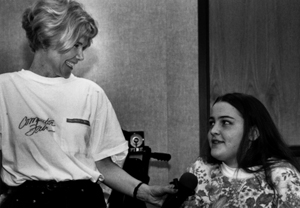
I became a DO-IT Scholar in 1994. I have peripheral neuropathy and use a wheelchair. This year, I started Running Start at Pierce Community College which allows me to earn college credit while attending high school. College life is absolutely outstanding compared to high school life. I was told of a club called OnGoers. It is a club that caters to all different disabilities. I went to a meeting today and found myself more involved in advocating for myself and people with disabilities than I have ever been in my life.
OnGoers is basically a networking thing. We all pool resources, have discussions, and FUN. It's more on my level because more adults are in it instead of kids my age...which...as we all well know...kids my age can well...be intimidating. But adults... Anyways...I told them I was a Phase III Scholar and they were amazed! They've heard all about DO-IT. We meet every other Thursday, and someday plan to introduce Dan and Sheryl, so they can teach about adaptive technology and the transition to college and beyond.
The Continuing Saga of Anna at UW
Hey everybody! How's life? Mine's okay except for homework, not sleeping in, and having a cold.
I lived on north campus at the University of Washington last year and on south last summer and this year. I thought I'd give you the run down on various aspects of things to help you better decide where you'd like to dump yourselves when you get to the UW, assuming of course that you don't dump yourself onto some other college campus, in which case I can't help you.
Okay, to start with I am prejudiced. I like north campus much better for several reasons. First, the only major street you have to cross is Stevens Way which runs through campus. Now, this street does have quite a bit of traffic on it, but it's pedestrian oriented. South campus dorms are actually off campus a couple of blocks. Since the overpass over 15th is down until December 1996 or so, it is necessary to cross 15th street. For you nonlocal people, 15th is a major street in the northeast quadrant of Seattle. It has many big vehicles like busses and trucks that move very fast. It's a scary place for anybody, not just for someone blind like me. Now, I've gotten used to crossing this street, but it isn't fun and my walk home this year is stressful.
Now, for elevators. McCarty Hall, as the Scholars may know (that's the dorm Scholars stay in for the DO-IT Summer Study), has the sensor things. I've heard that McMahon's don't, but I'm not sure. Terry and Lander's definitely do not! The elevators try to eat you. For wheelchair users, McCarty is probably the best dorm. Haggett might be all right, but its hallways tend to be narrow. Terry and Lander would actually be great if the elevators had sensors in them.
As for food, one advantage to Terry and Lander, which are two dorms that are in one big building, is that the cafeteria is open every day. On north campus, Haggett's is open Tuesday through Saturday, McMahon's from Sunday through Thursday, and McCarty doesn't have one. This means that no matter where you live, you have to go somewhere else to eat a couple of days a week.
UW Housing and Food Services also has convenience stores where you can use you meal card. They have canned and frozen food, junk food, kleenex and more. North campus' is called The Back Door and south campus' is Steven's Pantry. I like the Back Door better because it's easier to reach. It's right below McMahon and it's open until 11:00. It's safe to walk there late at night because there are usually people wandering about on the sidewalk in front of the dorms until midnight. And you take the sidewalk to the stairs that take you down to the Back Door. Even after you go down the stairs there are people going to and from the store and playing basketball and so on. The only problem is I'm not sure how wheelchairs get there. Steven's Pantry is further away and it's harder for me to get to because it's across big wide open spaces and the Burke Gilman Trail. I always have to go with someone. Also, Terry and Lander are off campus so it isn't as safe to walk to the store late at night. However, it might be easier for people in wheelchairs to get to. But, of course, Terry and Lander have those insane elevators. Go figure! *grin*
Later...Anna
Applause for...

One of our newest television stars is Phase III Scholar Sarah. She appeared on a Portland, Oregon show called "Town Hall" that aired on September 10th. She and other Portland/Vancouver area youth discussed how the world in the 1990's is perceived by different social and ethnic teen groups. Sarah's consensus is that the 1990's will be good." Way to go, Sarah!
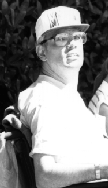
Kudos to Mentor Doug Lefever for being nominated for the 1995 Archbishop Raymond Hunthausen Humanitarian Award! Joe Thompson, Doug's supervisor at the Giving Tree (an organization where formerly homeless men make wooden toys, with proceeds of the sales going to homeless children) observed his involvement in the community and nominated him for this prestigious award. Doug is one of two finalists for this award, which acknowledges a volunteer's commitment and service to the poor and disadvantaged in the community. Among his extensive list of involvements are: working 30+ hours a week at the Giving Tree; volunteering on the Board of Directors for United Cerebral Palsy of King and Snohomish Counties; and of course, volunteering many hours to DO-IT during the Summer Study and throughout the year as a Mentor. As one of two finalists from northern Washington, Doug will be competing with finalists from central and southern regions and the award will be given in December.
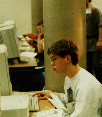
Its poultry in motion! What Scholar has the unique distinction of having trained a chicken to lie on it's back and fall asleep? Phase II Scholar Bill was recently selected to attend the National 4-H Congress in Tennesee. One of only 15 Oregonians to earn this honor, Bill currently focuses his energies primarily on pigs. Of things porcine, Bill states, "Pigs are great escape artists...you have to look for every little thing they can get out of." Bill currently has six pigs he is raising on his family's ranch west of Phoenix, OR. He will compete in Tennessee in the computers and science category.
Another DO-IT Scholar becomes a TV star! Phase II Scholar Rachel was featured on Eastern Washington news station KVEW42. She was selected to represent the successful impact Children's Hospital in Seattle had on her life. Rachel, who is on a portable dialysis machine for 10 hours a night, leads a very active life. The news story focused on her success as a student and her involvement on the cheer squad at her high school. Great job, Rachel!
We'll close this column with an email message from a proud DO-IT parent:
Hello, DO-IT Kids,
This is Andrew (Cassidy)'s Mom speaking. Andrew is too modest to announce the fact that he won an award at MDA Summer Camp last June, but I don't mind telling you all about it. It is called the "Bret French Memorial Award" and it is given to the camper voted to be the embodiment of the camp spirit. It is awarded each year by the State Firefighters Association. They sent a representative from each of the union groups around the State to camp to visit with the kids and get to know them. Then they held their vote and honored Andrew with it this year.
The award honors the ideas of caring, sharing and brotherhood. A plaque was given to Andrew by the Firefighters during the Jerry Lewis Telethon on one of the local cut-aways. We had to drive clear over to Billings on Labor Day weekend to take part in this event. But we had a good time, and Chuck and I are pretty proud parents right now.
Bye for now,
Connie Cassidy
Off The Net
Here are some interesting interpretations of nature from test papers and essays submitted to science and health teachers by junior high, high school, and college students around the world.
- "When you breath, you inspire. When you do not breath, you expire."
- "H2O is hot water, and C02 is cold water."
- "When you smell an odorless gas, it is probably carbon monoxide."
- "Blood flows down one leg and up the other."
- "The moon is a planet just like the earth, only it is even deader."
- "Mushrooms always grow in damp places and so they look like umbrellas."
- "The body consists of three parts - the branium, the borax, and the abominable cavity. The branium contains the brain, the borax contains the heart and lungs, and the abominable cavity contains the bowels, of which there are five - a, e, i, o, and u."
- "The pistol of a flower is its only protection against insects."
- "A fossil is an extinct animal. The older it is, the more extinct it is."
- "Rhubarb: A kind of celery gone bloodshot."
- For a nosebleed: Put the nose much lower then the body until the heart stops."
- "For a head cold: Use an agonizer to spray the nose until it drops in your throat."
DO-IT at the Computer Fair
The 22nd Annual UW Computer Fair will be held March 13 from 10 am - 8 pm and March 14th from 9 am to 5 pm on the University of Washington Seattle campus.
DO-IT will be hosting a series of activities March 13th and 14th at the 1996 Fair. Held in the Husky Union Building (HUB), DO-IT seminars will cover topics pertinent to those with disabilities who use computers, or would like to use computers. DO-IT related activities will include:
5:00 - 5:45 pm, March 13
Developing Accessible WWW Home Pages
Basic tips on making home pages accessible to people with disabilities.6:00 - 7:00 pm, March 13
People with Disabilities on the Net
The Internet enhances communication and information access for people with disabilities.7:00 - 8:00 pm, March 13
Empowerment Through Technology
Overview of adaptive technologies for people with disabilities.10:00 am - 8:00 pm, March 13, 9:00 am - 5:00 pm, March 14
DO-IT Exhibit
Visit the DO-IT booths in the exhibit area during regular Computer Fair hours. Adaptive technologies for individuals with disabilities are featured.
The UW Computer Fair is the oldest and largest computer show in the Pacific Northwest. Sponsored by Computing & Communications, the Fair brings together professionals from the University and the community for presentations and demonstrations of state-of-the-art computer equipment, software, and support materials.
More than 16,000 visitors are expected to attend the 1996 Fair. This event will feature over 150 vendor displays of the latest technology, including networking, computer-aided design, image processing, desktop publishing, personal computers, workstations, applications software, and much, more more...as well as opportunities to win great door prizes! More than 50 presentations will cover a variety of topics related to computer and communications technology for business, scientific, personal, and educational applications.
All fair activities take place in the HUB. Light refreshments and full meals are located near the display areas. Free parking is provided to exhibitors and Fair visitors. Shuttle buses bring visitors from the parking area to the HUB. All Fair activities are free of charge and open to the public. To request more information about the Computer Fair, call (206) 543-3630 or send email to compfair@u.washington.edu.
Hope to see you there!
Calendar of Events
School Restructuring and Inclusion:
Equity and Excellence for All
January 11-13, 1996
Nashua, New Hampshire. For information contact The Institute on Disability/UAP, University of New Hampshire, 10 Ferry St., Unit #14, Concord, New Hampshire 03301, (603) 228-2084, FAX (603) 228-3270.
IDEAS '96 Conference
January 25-26, 1996
Spokane, Washington. DO-IT will present a workshop during this conference on January 25, 11:15-12:30 pm. For information contact Angela Johnstone, Conference Coordinator, 1025 W. Indiana Ave., Spokane, WA 99205-4400, (509) 456-6320, FAX (509) 456-2999.
The Duncan Seminar:
Adaptive Technology: Choices, Priorities & Opportunities
March 8-9, 1996
Seattle, Washington. Children's Hospital & Medical Center. Principles and problem-solving approaches of adaptive technology, including academic, vocational, social, and recreational issues. For information contact Children's Continuing Medical Education at (206) 526-2501.
UW Computer Fair March 13-14,1996
Seattle, Washington. University of Washington. The oldest and largest computer show in the Pacific Northwest takes place in the HUB on the main campus. For more information contact UW Computer Fair, Box 354842, Seattle, WA 98195-4842, (206) 543-3630, FAX (206) 685-4045 or send email to compfair@u.washington.edu.
Council for Exceptional Children (CEC) Conference
March 16, 1996
Tacoma, Washington. Educators and others discuss key issues related to children with disabilities. For information contact CEC, P.O. Box 337, Tacoma, WA 98401-0337, (206) 627-7843.
Technology and Persons with Disabilities Conference
March 19-23, 1996
Northridge, California. California State University's Center on Disabilities. For information contact 18111 Nordhoff St., Northridge, CA 91330-8340, (818) 885-2578 (Voice/TTY) or Itm@csum.edu.
Assets '96 ACM/SIGCAPH Conference
April 11-12, 1996
Vancouver, Canada. Provides a forum where researchers and developers from academia and industry can meet to exchange ideas and report on new developments relating to computer-based systems to help people with disabilities and others with special needs. For information contact Ephraim P. Glinert (518) 276-2657 or glinert@cs.rpi.edu.
PAVE Workshop on Community Liaison Training April 12-13, 1996
Eastern Washington Area. This workshop by PAVE's Parent to Parent Training Project will assist parents in preparing for IEP meetings. PAVE's Community Liaisons are parents who volunteer their time, experience, and knowledge to help other parents. For information contact Washington PAVE, 6316 S. 12th St., Tacoma, WA 98465-1900, (800) 5-PARENT (Voice/TTY).
Pacific Northwest Technology Conference and Expo
April 24-27, 1996
Seattle, Washington. Washington State Convention and Trade Center. For information contact WTAC Convention Services NW, 8511 15th Ave. NE, Seattle, WA 98115, (206) 526-1240 (Voice/FAX), or electhiway@aol.com or wta@applelink.apple.com.
NCCE Conference April 24-27, 1996
Portland, Oregon. For more information contact NCCE, P.O. Box 672, Wenatchee, WA 98807.
Preparing for the Transition to College April 27, 1996 Spokane, Washington. A workshop co-sponsored by DO-IT. For information contact WATA/Easter Seals, West 606 Sharp, Spokane, WA 99201, (509) 328- 9350 or (800) 214-8731.
If you know of an event that relates to science, engineering, or mathematics studies or careers and might be of interest to DO-IT News readers, notify the DO-IT office.
More About DO-IT
DO-IT News is published at the University of Washington with input from the staff, Scholars, Ambassadors, and Mentors of DO-IT. The College of Engineering and Computing & Communications coordinate the program. DO-IT is primarily funded by a grant from the National Science Foundation.
- Publisher: Sheryl Burgstahler
- Editors: Kate Farquhar-Shirley and Jane Sparks
This material is based upon work supported by the National Science Foundation under Grant No. 9550003. Any opinions, findings, and conclusions or recommendations expressed in this material are those of the author(s) and do not necessarily reflect the views of the National Science Foundation.